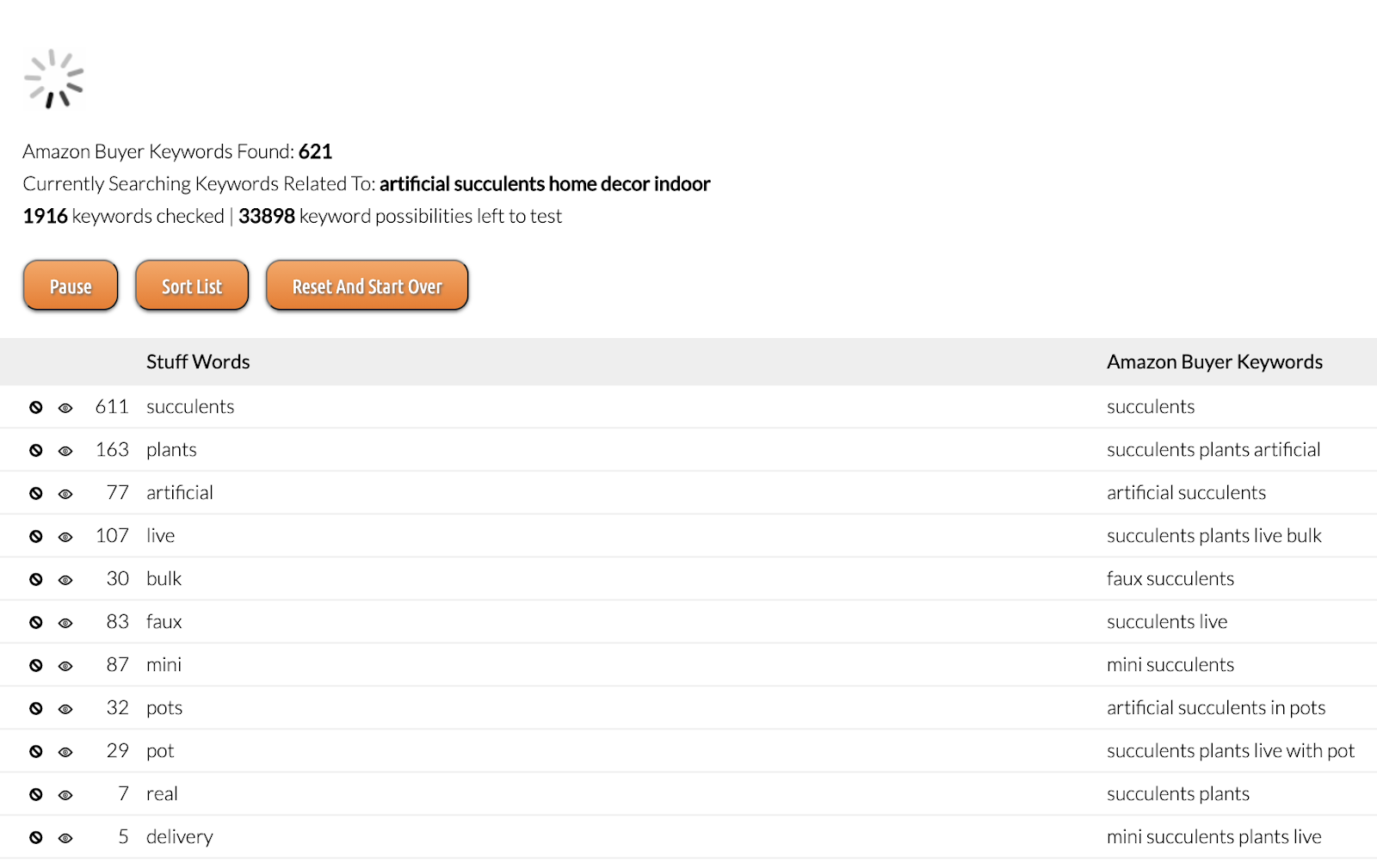
If you're looking for ways to improve your sales, you should use the proven tactics from the world of retail. Using retail sales examples, you'll see that the sales process can be broken down into clear and logical steps. Each step of the sales process is presented as a clear step in the sales process, with important sales skills identified for each one. This will help you to see how these skills can be applied in your business.
Do your research before you make a purchase
Trying a product before buying it is a new trend in ecommerce, especially with the next generation of consumers in mind. This group represents $44B in direct buying power, and will make up 40% to 50% of consumers by 2020. They expect brands to keep up with their tech-savvy customers. Businesses can increase customer satisfaction and retain customers by allowing customers to test products and then pay for any items that they don't like.
La Perla, a luxury brand, has recently been featured in retail sales. The button is located below the Add-to-Cart button. This button provides a brief explanation about the service and allows customers to try lingerie for 30 days after dispatch. Prices range from $500 to $1500. La Perla has recently added the button "Try before you buy" to its website. In November 2017, the retail sales company introduced their Try Before You Buy service. Customers can now try lingerie for 30 days from the date of dispatch.

In-store events
In-store events are a great way to attract more customers to your store, but they do require a substantial investment in time and manpower. They allow you prepare your store for a certain audience. If you host an event such as a sip&paint, you will need paints, brushes and canvases. This will bring people to your store they wouldn't otherwise visit.
Local media is critical for promoting your events, whether they are a product launch, customer appreciation, or holiday event. You can do this by partnering with local media to provide event listings for community calendars. In-store events can be a great way to increase your reach. Invite brands from similar target groups to collaborate with you. These brands will benefit both from increased exposure and a lower event cost.
Asking for feedback
You must ask the right question when you collect feedback from customers. Ask your customers what they think about your customer service and how you can improve it. You could ask, for example, if your site should include a new product category or if customer service needs to be improved. You can also ask about other issues that might be affecting your overall user experience. Customers may complain about delivery or service on an e-commerce website.
You can get honest feedback from customers who have purchased the product. Customers who have just purchased a product will be more open to providing valuable feedback, since they have already completed the transaction. You can also ask about their experience with the product and provide a rating or comment. Be sure to specify what kind of feedback you need, but avoid vague feedback. If customers don't understand what to expect from an experience, it can be difficult to get honest reviews.

Creating a customer loyalty plan
A customer loyalty program can be daunting when starting a new business. Even though the point-of-sale is the most frequent touchpoint, buyers may not want to sign up right away. It may be easier for you to collect an email address at the time of purchase, and then they can fill out the rest of the program online whenever it suits them. Below are some tips on how to create a successful customer loyalty programme.
To give customers incentive to return, create a customer loyalty program. Loyalty programs could be as simple as offering customers bonus points on future purchases. This gives customers the feeling that they are valued and is a source of repeat business. A well-designed loyalty program will help to improve your company's brand image and ultimately, your bottom line. This article offers tips and tricks to create a loyal customer program that is effective for your retail company.
FAQ
How do I do smart online shopping?
Smart shopping online allows you to save money and not compromise on quality. Here are some tips:
Do your research and shop around. Compare prices and see which store offers the best deal.
Ebates and other cashback apps are another option. These programs work similarly to cashback programs that are available at physical stores. The amount that you spend on their app will earn you points. These points can then be used for discounts or gift cards.
Look out for promo codes. These codes are available on sites like RetailMeNot.com. Enter the code at checkout to get your savings. The savings will be automatically applied.
Last but not least, be sure to check out the clearance sections. Sometimes you will find great deals on high-end brands at a discounted price.
Why is it important to create a shopping cart?
A shopping list helps you remember what you need to buy when you go grocery shopping. This will save you time and prevent you from running around looking for things you have forgotten. If you're not sure which aisle it's on, a shopping list can make it easier to locate the item.
Shopping lists can help you save money. You can also save money by making a list of what you need, such as milk, bread and eggs, butter, cheese, cereals, and other items, while you're at the grocery store.
Is it acceptable to ask for discount coupons when shopping?
You should always try to negotiate a better price on buying items. It is acceptable to ask for discount codes. If you're polite, they might offer you a special deal. This could save your money over the long term.
What are the disadvantages and advantages of online shopping?
Online shopping has many advantages for both retailers and consumers. The biggest advantage of online shopping is its convenience. Customers can shop wherever they are at any time. Because you don’t have to go into shops to shop, there are less restrictions on what you can buy. However, there are disadvantages. Online shoppers may not know how much an item is until they order it. This could lead to them spending too much. One disadvantage is that customers may feel more secure buying from big-box stores, as they are more used to seeing products in person. Additionally, customers who order something online will not be able to return their product. Additionally, brick-and mortar stores may be under pressure from online shopping because they could lose business to online rivals.
Statistics
- Beyond that, you'll be liable for a 25% import tax. (makeuseof.com)
- A report from the U.S. Census Bureau found that in the first quarter of 2022, an estimated $250 billion was spent on retail e-commerce sales.1 (thebalance.com)
- All items on AliExpress have an estimated delivery time on the product page, and it's usually anywhere from 20 to 60 days. (makeuseof.com)
- The vast majority only change a password to protect privacy a few times a year (27 percent) or, more likely, never (35 percent). (pcmag.com)
External Links
How To
How to shop online safely
Online shopping is one way to get goods and services at a very convenient price. However, online shopping comes at a high cost. While online shopping offers many advantages, there are also some risks. The greatest threat is identity theft. Identity thieves use your personal data (name, address, credit card number) to steal money from you or take out fraudulent loans against your name. Your stolen information is then sold on the black marketplace. These tips will help you to be safe while conducting business online.
-
Use secure websites. SSL encryption is a free service offered by most online stores to protect customers' data. You can only see the information that you entered, such as names and addresses or credit card details. It prevents others from viewing what you put in. When you are choosing an online store to do business, make sure they have a valid certificate from a recognized CA. Look for the green padlock icon next to the URL bar when browsing.
-
Keep your password secret. When you first sign-up for a new account you'll receive an email asking for confirmation of your username and/or email address. This information should never be given to anyone. Keep them safe! If someone takes your wallet, they may also have access to your accounts. Save them on your computer instead. You should also change your passwords regularly - every three months is recommended.
-
Keep track on your orders. If you're sending items to yourself or others, make sure you keep track of where you send those packages. Many people get scammed because they think they sent something to themselves, but it was actually sent somewhere else. Always check the tracking number before you pay for shipping. You should never ship anything without proof of delivery. If you aren't satisfied with the service rendered, please contact the company right away.
-
Make sure you know who your dealings with. Many websites ask you for sensitive information, including your full name, date and birth, Social Insurance Number, bank routing number, and social insurance number. These details help them identify you, so be careful about giving them out. If you're unsure whether a website needs this information, just Google "what does need?" You'll find many answers.
-
Beware of pop-up windows Pop-up windows can bombard you with offers and special deals from many sites. Some ads are legitimate but some are intended to trick users into divulging private information. For example, a fake anti-virus program could ask for your banking information, credit card numbers, and social security number. To avoid being tricked, never click on links that appear suspicious.
-
Beware of phishing scams. Phishing scams involve hackers pretending to be from reputable businesses in order for consumers to hand over their financial details. Phishers often create emails that look like they come from banks or retailers, encouraging users to log in and update their account information. Once your financial information has been given, hackers can take control of your finances. Hackers can also empty your bank accounts and transfer funds between accounts. You have many options for identifying a scam email, including How to Spot Phishing Scams.
-
Do your homework. Before signing up for a deal, always read the fine print. The terms and conditions of any contract you agree to must be clear and easy to understand. Take the time to review all terms and conditions carefully. To save money, avoid paying hidden fees.
-
Shop around. Shop around. Compare prices on different websites until finding the lowest price. You can also compare shipping prices when ordering multiple items. Shipping costs can vary greatly depending upon which website you use. For fast shipping, it's worth paying an extra.